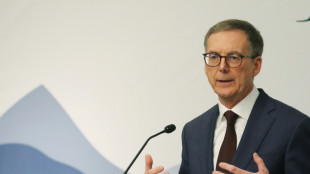

US hiring beats expectations in June despite tariff worries
The US economy added more jobs than expected in June while the unemployment rate edged down, government data showed Thursday, offering signs of continued labor market strength despite worries over President Donald Trump's tariffs.
Job growth came in at 147,000 last month, rising from a 144,000 figure in May -- which was also revised upwards -- said the Department of Labor.
The unemployment rate ticked down from 4.2 percent to 4.1 percent, and wage gains decelerated to 0.2 percent, the report added.
The world's biggest economy has fared relatively well since the Covid-19 pandemic, with a resilient jobs market allowing consumers to keep spending.
But Trump's sweeping tariffs on US trading partners, including steep rates on imports of steel, aluminum and autos, have dragged on consumer sentiment and fueled business uncertainty.
That uncertainty has been accentuated by the US leader's approach of unveiling, then adjusting or halting measures -- causing firms to become cautious in investments.
With a further wave of tariff hikes potentially incoming next week, analysts are monitoring for fragility in the job market and signs that companies might pull back in hiring and expansion.
A consensus forecast by Briefing.com had expected overall job growth of 120,000.
In June, the state government and health care sectors added jobs while the federal government continued shedding roles, the Labor Department said Thursday.
The federal government lost 7,000 jobs and employment is down by 69,000 since reaching a recent peak in January, the report added.
But salary growth appears to be cooling, from a 0.4 percent month-on-month increase in May to 0.2 percent in June.
From a year ago, wage gains were up 3.7 percent, easing from the prior month as well.
But the figures will bring relief to observers worried after data from payroll firm ADP sparked alarm Wednesday, as it reported that the private sector unexpectedly shed jobs.
It is not uncommon for the ADP report to diverge from official figures, but analysts believe it can help understand the longer-term trajectory of the labor market.
ADP noted Wednesday that although layoffs were rare, there remains a hesitancy to hire and replace departing workers.
For now, a solid labor market is likely to give the US central bank some room to hold interest rates steady for longer as policymakers observe the effects of Trump's tariffs over the summer -- and whether they will fuel broad inflation.
If the labor market weakened too quickly, the Federal Reserve could be inclined to lower rates sooner to boost the economy, even if inflation were not progressing downwards as swiftly as hoped.
W.Janssens--RTC

